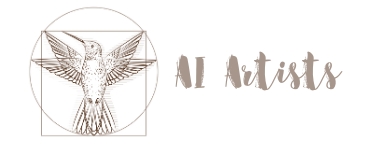In the rapidly evolving world of digital art, distinguishing between human-created and AI-generated pieces has become increasingly challenging. As AI art tools advance, they produce works that closely mimic human creativity, making how to tell if art is AI generated getting more and more difficult.
Understanding AI-Generated Art
AI-generated art is created using algorithms and machine learning models trained on vast datasets of images and styles. These systems, such as Generative Adversarial Networks (GANs), can produce artworks that range from abstract compositions to highly realistic images. While impressive, AI often struggles with certain details and nuances that human artists naturally incorporate into their work.
Key Indicators of AI-Generated Art

- Inconsistencies in Details:
- Anatomical Anomalies: AI often misrepresents human anatomy, leading to images with extra fingers, distorted limbs, or facial features that appear slightly off.
- Text and Symbols: AI-generated art may include text that is gibberish or symbols that resemble real characters but are nonsensical upon closer inspection.
- Unnatural or Surreal Elements:
- Lighting and Shadows: Inconsistencies in lighting, reflections, or shadows can indicate AI generation, as the technology may not accurately replicate complex light interactions.
- Background Details: AI might produce backgrounds with warped architecture, impossible landscapes, or elements that defy physics, revealing its synthetic origin.
- Repetitive Patterns and Textures:
- AI models may generate repetitive textures or patterns, especially in areas like hair, foliage, or fabric, lacking the variation typically introduced by human artists.
- Lack of Emotional Depth:
- While technically proficient, AI art may lack the emotional resonance or intentional imperfections that characterize human-created artworks.
Technical Methods to Detect AI Art

- Metadata Analysis:
- Examining an image’s metadata can provide clues about its origin. AI-generated images might contain metadata indicating the use of specific AI tools or lack metadata typically embedded by digital cameras or human artists.
- AI Detection Tools:
- Several online platforms and software are designed to detect AI-generated images by analyzing patterns and artifacts unique to AI synthesis. However, their accuracy varies, and they should be used as supplementary tools rather than definitive solutions.
Practical Steps to Identify AI-Generated Art

- Examine the Image Closely:
- Zoom in to inspect details such as hands, eyes, and backgrounds for anomalies or unnatural elements.
- Research the Source:
- Investigate the artist or platform that produced the artwork. Lack of an artist’s portfolio or the presence of multiple styles inconsistent with a single artist’s work may suggest AI involvement.
- Use Reverse Image Search:
- Employ reverse image search tools to check if the artwork appears across various platforms, which might indicate AI generation or use of stock elements.
As AI-generated art becomes more sophisticated, distinguishing it from human-created art requires a keen eye and awareness of common indicators. By paying attention to details, utilizing technical analysis, and staying informed about AI art trends, you can better navigate the evolving landscape of digital art and appreciate the nuances that differentiate human creativity from machine-generated works.
